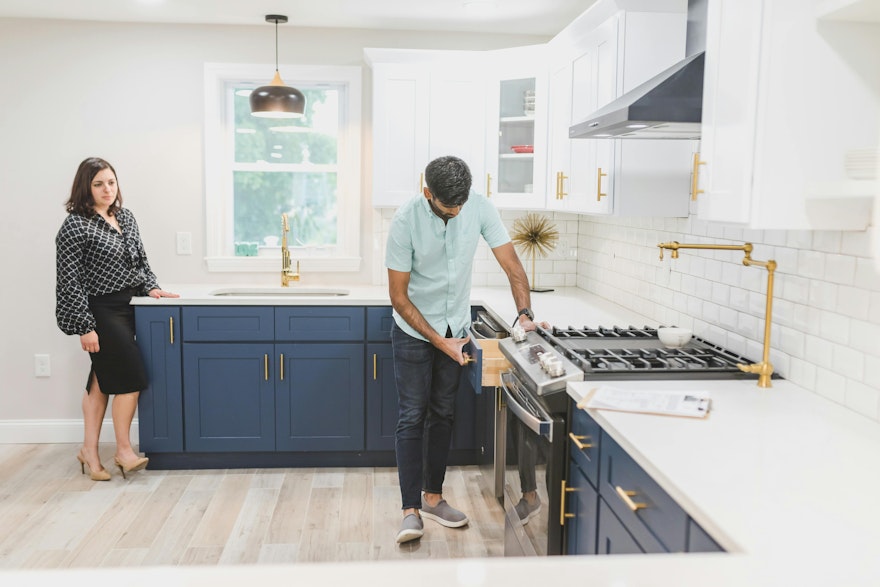Buying a home is an exciting milestone, but it also involves many important steps to ensure a smooth transaction. For home buyers in Melbourne, one crucial task before settlement day is conducting a final inspection of the property. This pre-settlement inspection is your last chance to verify that the home is in the same condition as when you signed the contract and that the seller has met all their obligations.
Why is a final inspection important?
The main purpose of a final inspection is to protect you, the buyer. Even if you had a professional building and pest inspection done earlier, a lot can change between signing the contract and settlement day, which is typically 30-90 days later.
During this time, the seller may still be living in the home or it could be vacant. Either way, there is potential for damage to occur, whether accidental or from the seller removing fixtures that should have stayed. The home could also have deteriorated due to neglect.
Without a final inspection, you could get stuck with costly repair bills for issues that should have been the seller's responsibility. You want to identify any problems while you still have negotiating power, before the sale is finalised.
When should you conduct the final inspection?
In Victoria, buyers are entitled to a pre-settlement inspection within 7 days before settlement, at a reasonable time arranged with the seller or their agent. However, it's best to schedule it as close to settlement as possible, ideally 2-3 days before.
This gives you a more accurate picture of the property's condition when it will change hands. If any issues arise, it also leaves a short buffer for the seller to rectify them or for your conveyancer to negotiate an alternative solution before settlement.
Who should attend the final inspection?
As the buyer, you should definitely be present for the final inspection, along with anyone else involved in the purchase decision. It's also wise to have an impartial witness, typically your real estate agent.
If you had to send someone on your behalf, make sure it's a person you trust who is familiar with the property and the terms of the contract. However, it's always better to see the property with your own eyes one last time if possible.
What should you look for during the inspection?
Bring along a copy of the contract of sale which specifies the property's inclusions, exclusions, and any special conditions the seller agreed to fulfil. You'll want to systematically check:
- The overall condition, ensuring no new damage, deterioration or unapproved alterations
- Fixtures and fittings are intact and functioning as expected
- Inclusions like window furnishings, light fittings, etc. are present
- Exclusions have been removed
- The property is vacant, reasonably clean and free of rubbish (unless otherwise agreed)
- Any special conditions have been met, e.g. agreed repairs completed
Some specific items to test include:
- Lights, power points, appliances, air conditioning
- Taps, toilets, showers, drainage
- Doors, windows, locks, screens
- Garage doors, remotes, security systems
- Blinds, curtains, other window coverings
- Pool equipment, outdoor features
Take photos to document the condition in case any disputes arise later. List any issues that need following up with the seller.
What can you do if you find problems?
If you discover any damage, defects or discrepancies during the final inspection, notify your conveyancer and agent immediately. Provide them with specific details and photos. They can then raise it with the seller's representatives and propose a solution.
Depending on the severity of the problems and how cooperative the seller is, potential remedies could include:
- The seller rectifies issues before settlement
- Compensation is provided at settlement
- A portion of funds are held back until issues are resolved
- Settlement is extended to allow more time
- Price is renegotiated
In most cases, issues can be resolved relatively easily. However, if the seller refuses to address major problems, you may need to weigh up your options, as you can't automatically delay settlement without risking breaching the contract yourself. Your conveyancer can advise you on the best course of action to enforce your rights while protecting your interests.
Conclusion
A final inspection is your safeguard as a buyer to ensure you're getting what you paid for. While it may feel like just another task in the hectic lead-up to settlement, it's important to be thorough and give yourself enough time to work through any issues that emerge.
By understanding your rights and obligations around the pre-settlement inspection, carefully checking all aspects of the property, and collaborating with your professional advisers, you can avoid unwanted surprises and make the transition to your new Melbourne home as smooth as possible.
If you have any questions about the final inspection process or need assistance with your property purchase, the experienced team at Pearson Chambers Conveyancing is here to help. Contact us today on 03 9969 2405 or email contact@pearsonchambers.com.au to discuss your needs and arrange a free review of your Section 32 contract.
